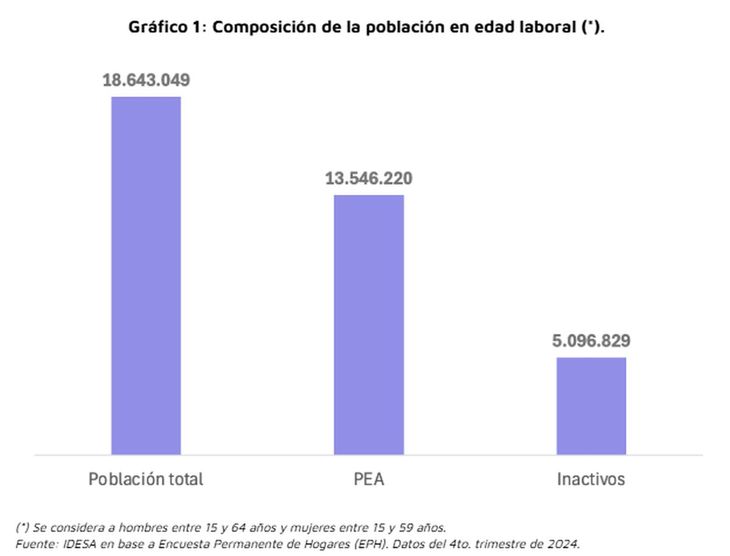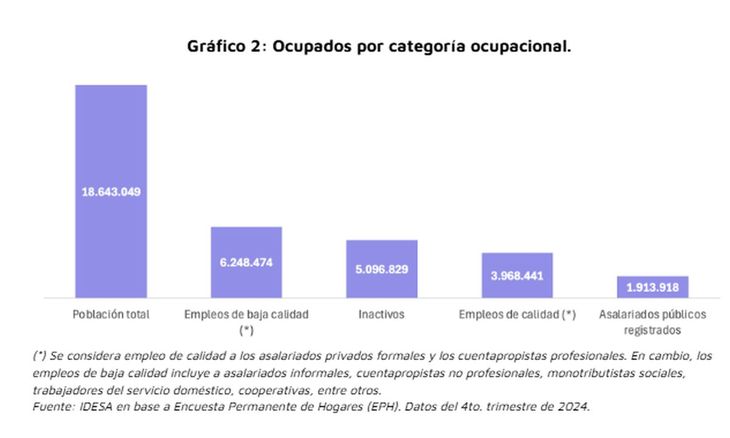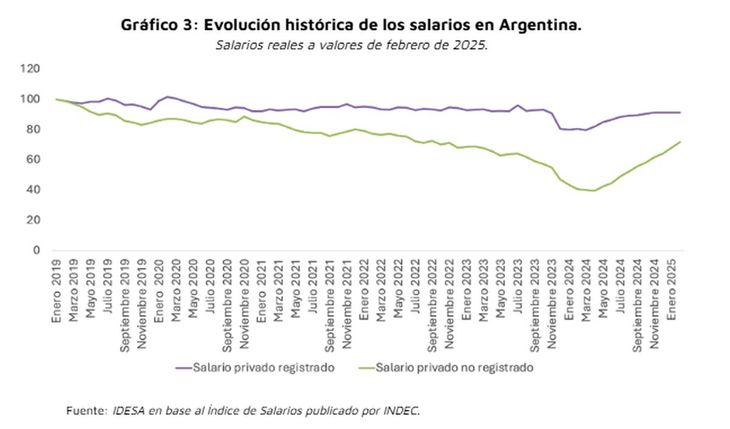Within the framework of Workers’ Daya special report revealed what are the three critical challenges facing the Argentine labor market. According to data from the quarter quarter of 2024 of the Permanent Household Survey (EPH) That the Indec elaborates, only 1 in 3 Argentines of working age have a job, and only 21% of them access quality job. The wagesin the eye of the storms.
The work done by the Institute for Argentine Social Development (IDESA), He showed that one of the main problems of the Argentine employment market is labor legislation, which discourages formal hiring. He also warned of the problems of a low quality education system that affects the training and preparation of future workers.
employment.webp
Employment data in Argentina.
The three challenges of the Argentine labor market
According to Idesa’s study, there are three central challenges that the Argentine labor market must face to improve its situation:
How many people are part of the labor market?
According to the Permanent Household Survey (EPH) of the fourth quarter of 2024, the urban population of working age in Argentina is 18 million. Of these, 13 million (73%) integrate the economically active population: 12 million have employment and 1 million seeks work.
The remaining 5 million (27%) are inactive, either due to lack of incentives or by devoting themselves to activities such as the study. In total, 1 in 3 Argentines of working age does not work.
Composition of the population at work age.jpg

Composition of the population of working age.
IDESA
Working conditions
Of the 18.6 million people of working age, only 4 million access quality employment, either as formal private wage earners or professional proprops. This represents only 21% of the total. In contrast, 6.2 million have low quality work and more than 5 million are directly outside the labor market.
The photo is clear: Just 1 in 5 adults of working age manages to insert in quality occupationswhile the rest faces more precarious forms of labor insertion or directly inactivity.
Occupied by generational category.jpg

The busy, according to age.
IDESA
Salaries: How much do workers win?
In a context of productive stagnation and high inflation, labor income in Argentina has suffered a sustained loss of purchasing power. Between January 2019 and January 2025, the real salary of workers registered in the private sector fell 9%, while that of informal collapsed more than 25%. This fall, which crosses the entire labor market, left most workers with real income at historically low levels, beyond sectoral or labor regime differences.
In addition to the drop in income, another problem that is observed is the marked inequality according to the type of employment. When comparing the income of a private employee registered with those of an informal worker, it is observed that, For every 10 pesos generated in formal employment, the informal produces just 5. This gap reflects the deep inequality of the labor market and limits the possibilities of progress. In addition, the professional training with professional training is located at the top of the salary scale, confirming that higher education not only facilitates access to employment, but also allows to reach better income.
EVOLUTION SALARIOS IDESA 2019-2025.JPG

How was the evolution of wages in Argentina between 2019 and 2025?
IDESA
Argentine labor market radiography: the obstacles to development
After the detail of the three challenges for the labor market that Idesa diagnosed in its report, it is also worth highlighting the inconveniences that generate obstacles for the development of employment and its conditions.
These problems (inactivity, job precariousness and salary inequality) have a common origin: the lack of productive jobs. This is due to work rules that discourage genuine hiring and protect corporate and bureaucratic interests rather than workers.
The main obstacles are:
- Labor legislation: High social charges, anachronistic collective agreements designed for large companies but applied to a diverse universe of firms with different scale and productivity, added to judicial uncertainty and excessive bureaucracy, discourage the creation of formal employment in SMEs.
- Educational System: Low educational quality hits employability. This is explained, in part, by a system management that prioritizes the interests of teaching unions over merit and quality.
Decades of institutional degradation and bad policies explain the stagnation of the labor market. Without a deep reform of the educational and labor system, it will not be possible to reverse the lack of productive employment or promote true social progress.
Source: Ambito




